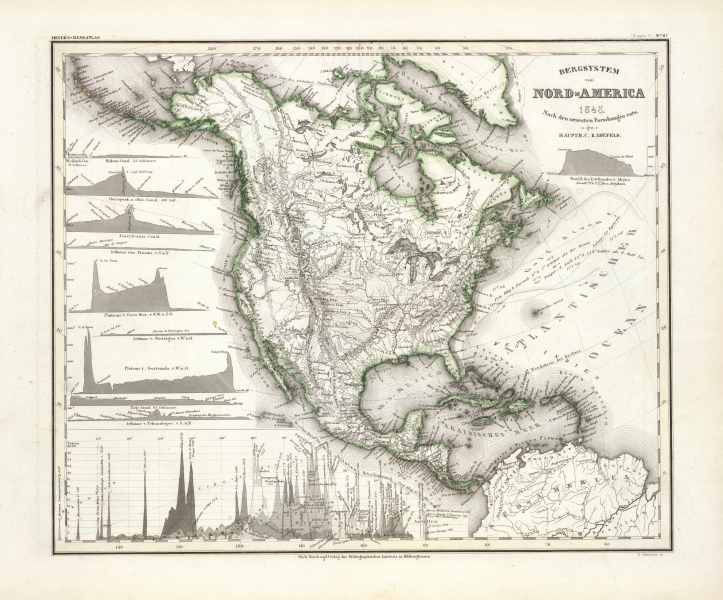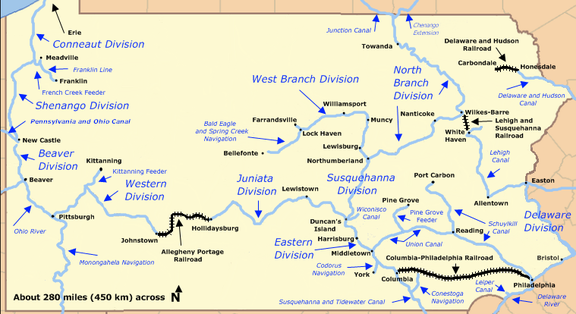Various Arctic, Antarctic, Northwest Passage, North America, Global
Step 0 of 0
1

2

3

4

5

6

7

8

9

10

11

12

13

14

15

16

17

18

19

20

21

22

23

24

25

26

27

28

29

30

31

32

33

34

35

36

37

38

39

40

41

42

43

44

45

46

47

48

49

50

51

52

E198 - Open Polar Sea - by Silas Bent - 1872
“The Open Polar Sea was a hypothesized ice-free ocean surrounding the North Pole. This unproved and eventually-disproved theory was once so widely believed that many exploring expeditions used it as justification for attempts to reach the North Pole by sea or to find a navigable sea route between Europe and the Pacific across the North Pole.” Wikipedia
“The theory that the North Pole region might be a practical sea route goes back to at least the 16th century, when it was suggested by Robert Thorne. The explorers William Barents and Henry Hudson also believed in the Open Polar Sea. For a time, the theory was put aside because of the practical experience of navigators who encountered impenetrable ice as they went north. However, the idea was revived again in the mid-19th century by theoretical geographers, such as Matthew F. Maury and August Petermann. At the time, interest in polar exploration was high because of the search for John Franklin's missing expedition, and many would-be polar explorers took up the theory, including Elisha Kent Kane, Dr. Isaac Israel Hayes, and George Washington De Long. It was believed that once a ship broke through the regions of thick ice that had stopped previous explorers, a temperate sea would be found beyond it.” Wikipedia
E198 - The Wasp 1882
E198 - Northwest Passage, Arctic & North America - 0023
E198 - Northwest Passage, Arctic & North America - 0024
E198 - Northwest Passage, Arctic & North America - 0025
E198 - Northwest Passage, Arctic & North America - 0028
E198 - Northwest Passage, Arctic & North America - 0030
E198 - Northwest Passage, Arctic & North America - 0873
E198 - Northwest Passage, Arctic & North America - 0997
E198 - Northwest Passage, Arctic & North America - 1003
E198 - Northwest Passage, Arctic & North America - 1006
E198 - Northwest Passage, Arctic & North America - 1209
E198 - Northwest Passage, Arctic & North America - 1217
E198 - Northwest Passage, Arctic & North America - 1257
"Sea of the west" .
This map is an antique map of the Americas titled "L'Amerique pour la Concorde de la Géographie des différents âges" (America for the Concordance of Geography of Different Ages), created by Noël-Antoine Pluche. It was published in his work Concorde de la Géographie des différens âges, with various editions released around 1764 and 1772.
Key Details
- Maker: Noël-Antoine Pluche (or Abbé Pluche).
- Year: Circa 1764 or 1772, predating Captain Cook's significant voyages.
- Content: The map provides a historical look at geographical knowledge of the time. It is notable for its depiction of geographical misconceptions prevalent in the 18th century, such as:
- A large, mythical "Sea of the West" (Mer de l'Ouest) in the Pacific Northwest.
E198 - Northwest Passage, Arctic & North America - 1265
E198 - Northwest Passage, Arctic & North America - 1259
E198 - Northwest Passage, Arctic & North America - 1267
E198 - Northwest Passage, Arctic & North America - 1274
E198 - Northwest Passage, Arctic & North America - 1276
E198 - Northwest Passage, Arctic & North America - 1278
E198 - Northwest Passage, Arctic & North America - 1288
E198 - Northwest Passage, Arctic & North America - 1295
E198 - Northwest Passage, Arctic & North America - 1305
E198 - Northwest Passage, Arctic & North America -1508
E198 - Northwest Passage, Arctic, North America - 1522 and 1523
E198 - Northwest Passage, Arctic & North America - 1358
E198 - Northwest Passage, Arctic, North America - 1433 and 1434
E198 - Northwest Passage, Arctic, North America - 1443 - 1446
E198 - Northwest Passage, Arctic & North America - 1365
E198 - Northwest Passage, Arctic & North America - 1369
E198 - Northwest Passage, Arctic & North America - 1371
E198 - Northwest Passage, Arctic & North America - 1380
E198 - Northwest Passage, Arctic & North America - 1386
E198 - Northwest Passage, Arctic & North America - 1389
E198 - Northwest Passage, Arctic & North America - 1413
E198 - Northwest Passage, Arctic & North America - 1414
E198 - Northwest Passage, Arctic & North America - 1418
E198 - Northwest Passage, Arctic & North America - 1419
E198 - Northwest Passage, Arctic & North America - 1430
E198 - Northwest Passage, Arctic & North America - 1431
E198 - Northwest Passage, Arctic, North America - 0871
E198 - Northwest Passage, Arctic & North America - 1729
E198 - Northwest Passage, Arctic & North America - 1740
E198 - Northwest Passage, Arctic & North America - 1742
E198 - Northwest Passage, Arctic & North America - 1745
E198 - Northwest Passage, Arctic & North America - 1750
E198 - Northwest Passage, Arctic & North America - 1754
E198 - Various Northwest Passage, Arctic, North America - 2466
E170 - 1570 Ortelius - Typus Orbus Terrarum DUPLICATED
“Ortelius' book of maps, first published in 1570, is considered the first modern world atlas. It was the first time that a set of maps, contemporary to the date of publication, was designed, drawn, and engraved with the intention of publishing them in a bound volume. Ortelius did not refer to his publication as an "atlas," as we know it today. Rather he entitled it "Theater of the World," implying not only that the entire known world could be viewed in this one book, but that the Earth was a stage on which human actions unfolded. Although most of the maps in this book pertain to European countries and provinces, it can be considered a world atlas because it also includes a map of the world (displayed here), as well as one map for each of the four continents. The featured map is from the second state and was published c.1578 and is similar to the first state map, but with a few corrections. It is one of the most recognized maps from the Age of Discovery. This version includes the mythical Great Northern Passage, an irregular "bulge" on the west side of South America and the mythical Great Southern Continent, "Terra Australis Ingognita," roughly in the place of Antartica before its discovery. Most of North America is still based on conjecture and mythology, though he does credit Columbus for its discovery.” Steve Hanon, themapmaven.com
https://www.loc.gov/resource/g3200m.gct00003/?sp=18 http://www.themapmaven.com/my-map-gallery
A Chart of the Southern Hemisphere, 1777 - James Cook
"A chart of the Southern Hemisphere; shewing the tracks of some of the most distinguished navigators: by Captain James Cook of his Majesty's Navy. Gulielmus Whitchurch, sculpsit; Anno. 1776. Published Febry. 1st., 1777 by Wm. Strahan in New Street, Shoe Lane & Thos. Cadell in the Strand, London."
Source: David Rumsey
To see entire collection of images at Rumsey from Cook's 1777 voyages, click here.
[ 2023-12-16 00:49:05 ]
Bergsystem, North America - Carl Christian Franz Radefeld - 1850
This map is from a notable German-language atlas authored by Carl Christian Franz Radefeld in 1850. Many of the thematic maps in my collection feature mountains and rivers of the world. Uniquely, this map shows the mountain ranges and canals of North America. By Fred DeJarlais
raremaps.com | davidrumsey.com
[ 2025-07-18 12:00:34 ]
Place a DOT on the image


